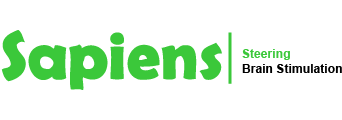
Deep Brain Stimulation is a technique that alleviates some of the symptoms of Parkinson’s patients by introducing an electrode into a precise area of the brain and stimulating it with an electrical charge. I was part of the VanBerlo team that helped Sapiens, a Dutch medical startup, to identify user-related challenges that medical professionals would face throughout the procedure, and to design their software for brain surgery planning.
Background of the project
Sapiens developed different technologies to support all stages of the Deep Brain Stimulation (DBS) procedure: planning of the surgery, execution in the operating room, and patient aftercare.
One of the main challenges of the project was to create a common understanding, among the stakeholders, of the needs of medical professionals, and to make sure that a user-centered approach was used to address the issues encountered.
Observational research
We visited several hospitals to interview medical personnel and to take a lot of pictures of the environment and the different artifacts involved in the process. This helped us to better understand the highly technical context of the procedure, to get a first-hand glimpse into the experience of doctors, and to identify factors that could be influential to Sapiens’ future product proposition.
Brainstorming workshops
I organized and facilitated multiple workshops with neurologists, neurosurgeons, electrophysiologists, designers and other experts in the field. During these sessions, we analyzed the DBS procedure from the point of view of the different professionals, we identified challenging points, and we discussed interesting opportunities for improvement throughout the whole process.
Journey map
I visualized the insights gathered during the research and workshops as a journey map that served three purposes: First of all, it made the DBS procedure more tangible, allowing stakeholders and team members to achieve a common understanding that everyone could reference. Secondly, it created an easy to consume overview of pain points and ideas for improvement that gave the whole team a better glimpse of the bigger picture. Lastly, it served as a starting point for a roadmap of future design projects to address with the company.
Interaction design
The first project in this road map was the design of the surgery planning software. Together with a colleague, we were responsible for the use case analysis and interaction design of the application that allows neurosurgeons to identify a 3-dimensional trajectory through which the electrodes can be safely introduced into the patient’s brain, without damaging any important blood vessels.
Refinement of designs
Being such complex software, the work was split into two phases: the general structure and navigation, and detailed screen and flow designs based on analyzed use-cases. The design was approached initially with simple wireframes to illustrate the concepts, followed by high-fidelity iterations in which finer details were worked out and further validated with medical experts. As the last step, a final look-and-feel was designed by one of my colleagues and applied to a number of representative mock-up screens.
Impact of the approach
Our research and workshops kickstarted a user-centered design collaboration between VanBerlo and Sapiens that spanned several assignments aiming to improve the DBS procedure with both hardware and software. These helped Sapiens to cement themselves as one of the most promising health-tech startups in Europe, to the point that it was acquired by Medtronic, the world’s largest medical device company, in a multimillion-euro deal.

